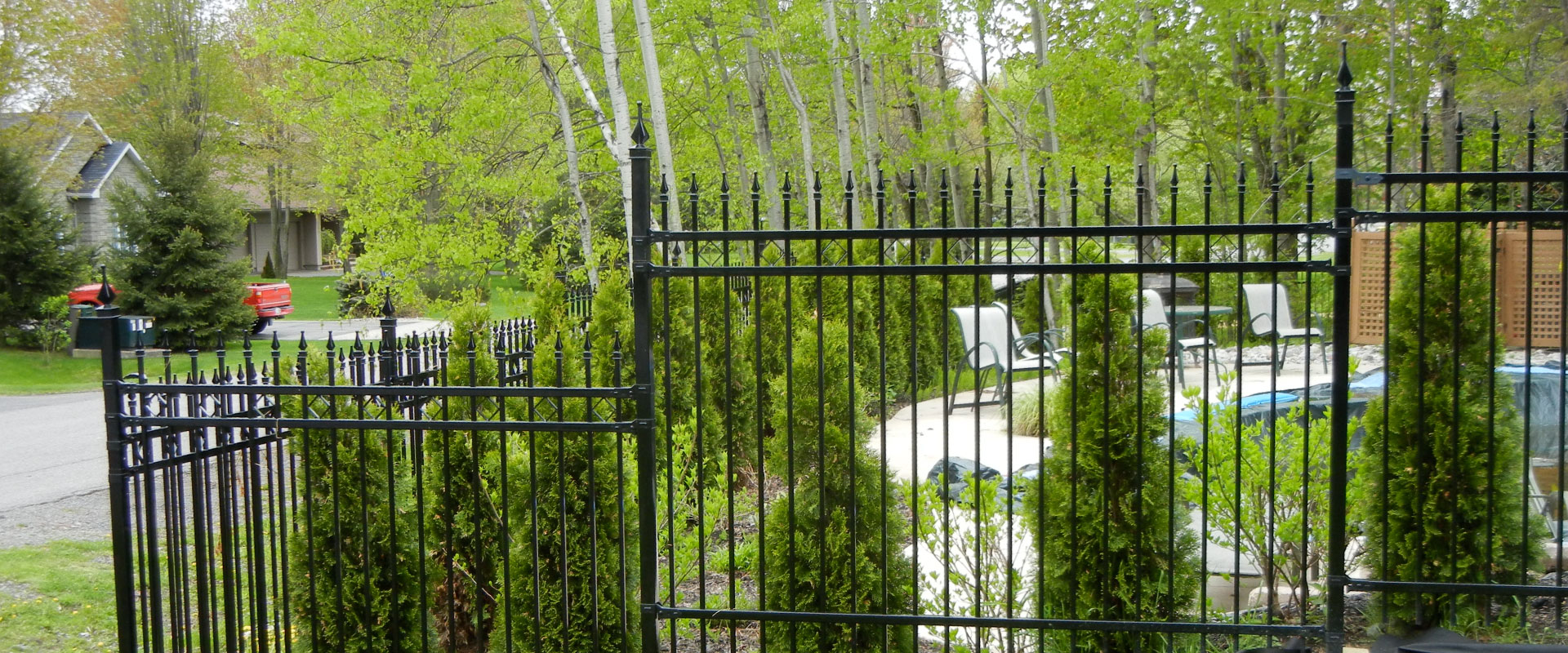All Categories
Featured

When choosing a fence for your property, longevity is one of the most essential aspects to think about. Wrought iron is a preferred alternative understood for its resilient stamina, but how does it compare to various other secure fencing materials such as timber, chain, and plastic link? Let's take a better consider the durability of wrought iron and how it compares to these typical alternatives.
- Wrought Iron: An Icon of Stamina. Wrought iron fences are synonymous with resilience. Whether you're installing a fence for safety and security or aesthetics, functioned iron can stand the examination of time without losing its honesty.
Contrast with Other Materials:
Wood Fence: While timber fencings can look all-natural and lovely, they need substantial maintenance to maintain their durability. Timber can warp, rot, or become plagued with termites, which jeopardizes its stamina. On the various other hand, wrought iron requires much less upkeep and can last for decades with the ideal care, making it the premium selection for longevity. Plastic Fencing: Vinyl is low-maintenance and resists problems like decomposing or pests. Vinyl fencings can crack or become weak over time, specifically in severe temperatures. Wrought iron, on the other hand, is resistant to both warping and splitting, making it an extra reputable and durable selection. Chain Link Fencing: Wire mesh fence are another resilient choice, yet they supply less protection and privacy than functioned iron. They're also much more prone to corrosion, particularly in moist or salted atmospheres. Wrought iron uses higher strength and toughness, making it preferable for homes where safety and security is a top priority. 2. Durability: A Life Time of Solution. Among the significant advantages of functioned iron is its outstanding life-span. A functioned iron fence can last 50 years or more when effectively maintained. Some wrought iron fencings have been standing for over a century. This material's integral resistance to weather-related wear and tear implies it continues to supply both function and beauty for years.
In contrast:

Wood Secure fencing: Wood fencings have a significantly shorter life expectancy, typically lasting only 10 to two decades depending upon climate and treatment. Normal upkeep such as discoloration, securing, and bug control is necessary to extending their life. Vinyl Secure fencing: Plastic fencings tend to last between 20 to 30 years prior to they begin to show signs of aging, such as fading or breaking. While vinyl is more resilient than wood, it still does not match the long life of functioned iron. Chain Web Link Secure Fencing: Wire mesh fence are durable and can last 20 to thirty years, yet they require normal examinations to ensure they do not corrosion or corrode. Covered or galvanized chain web link fencings are extra resistant to rust, however they still don't use the exact same extended life as functioned iron. 3. Minimal Upkeep for Maximum Resilience. Wrought iron fences may require some occasional treatment, but in general, they are low-maintenance contrasted to other materials. The main issue with wrought iron is rust, specifically in locations with high moisture or distance to saltwater.
Maintenance Comparisons:

Wood Secure fencing: Timber needs normal therapies to avoid deteriorating, warping, and bug problems. You should additionally clean and discolor the wood regularly to maintain its appearance and stamina. Vinyl Fencing: Vinyl is low-maintenance and only needs periodic cleaning to keep its appearance fresh. Nevertheless, it is vulnerable to cracking in extreme temperatures, which can compromise its durability. Chain Link Secure Fencing: While chain web link fencings call for very little maintenance, they can rust gradually, particularly in coastal areas. Including a protective layer can help prevent this, however the fence still requires periodic attention. 4. Visual Charm and Personalization. Wrought iron fencings not just use toughness however also provide a fashionable, elegant appearance that boosts your residential property's aesthetic allure. Offered in a range of styles, layouts, and surfaces, wrought iron fencings can be customized to fit any kind of home, whether you choose a typical or contemporary look.
Comparison with Other Materials:
Wood Fencing: Timber can include an all-natural, rustic charm to your property, but it does not supply the same variety of ornamental styles and modification choices as functioned iron. Plastic Secure fencing: Plastic fencings are readily available in several styles, however they tend to lack the sophistication and elaborate layout choices that wrought iron offers. Vinyl is also more limited in terms of modification. Chain Web Link Secure Fencing: Chain link is a highly functional product, however it doesn't give the exact same visual charm as functioned iron. It's usually chosen for safety objectives as opposed to appearances. 5. Verdict: Why Pick Wrought Iron? When it pertains to resilience, wrought iron is difficult to beat. It provides unparalleled toughness, long life, and resistance to damages, making it an exceptional financial investment for homeowner who desire a fence that can endure the test of time. While it does call for minimal maintenance to protect against rust, it much outlasts chain, wood, and vinyl link fencings in regards to both life-span and performance.
Whether you are seeking enhanced safety and security, a traditional visual, or a low-maintenance fencing remedy, wrought iron gives a resilient and trendy choice that can serve your home for years. Wrought iron is the best option for you. if you're looking for a fencing that will sustain the aspects and supply long-lasting worth.
Latest Posts
Necessary Fencing Upkeep Tips for Durability
Published May 12, 25
1 min read
Maintain Your Fence Solid with Seasonal Treatment
Published May 12, 25
1 min read
The Timeless Allure of Montana Fence's Timber Fence
Published May 12, 25
1 min read